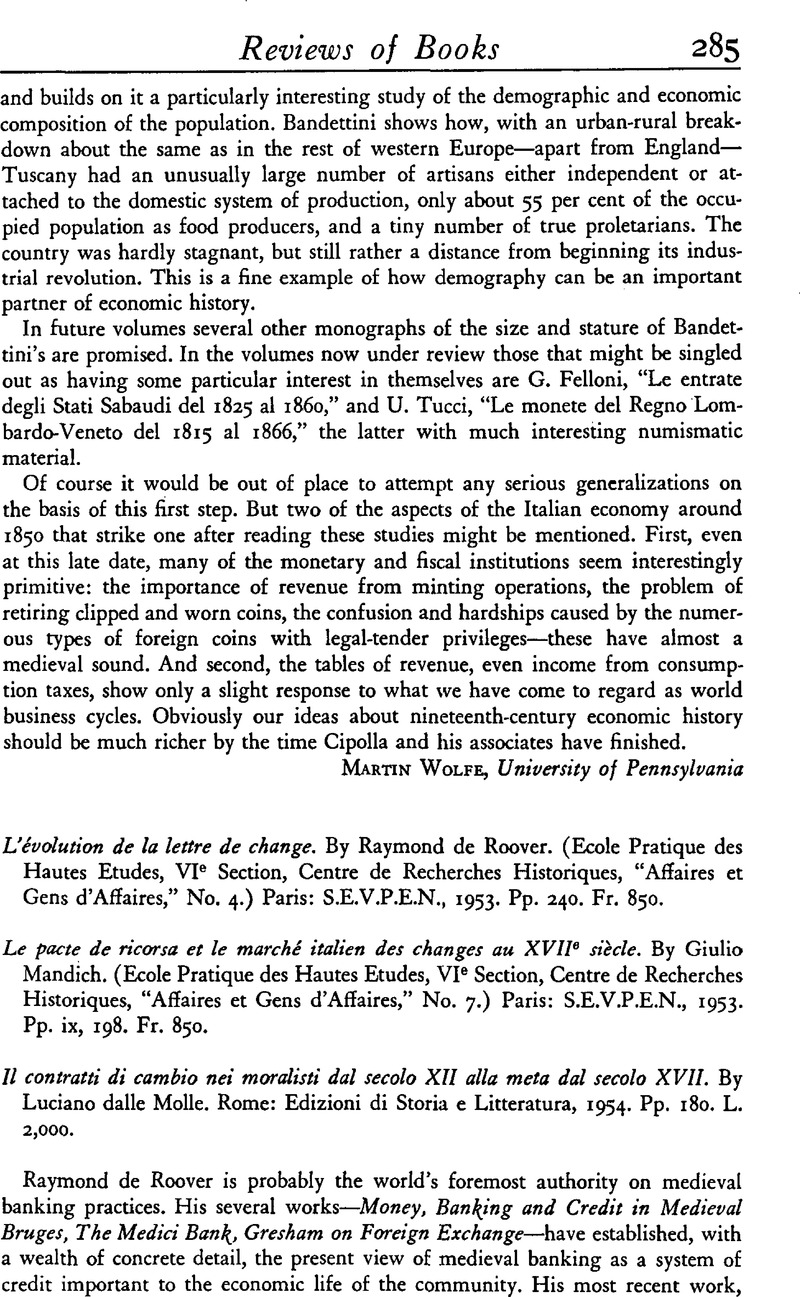No CrossRef data available.
Article contents
L'évolution de la lettre de change. By Raymond de Roover. (Ecole Pratique des Hautes Etudes, VIe Section, Centre de Recherches Historiques, “Affaires et Gens d'Affaires,” No. 4.) Paris: S.E.V.P.E.N., 1953. Pp. 240. Fr. 850. - Le pacte de ricorsa et le marché italien des changes au XVIIe siècle. By Giulio Mandich. (Ecole Pratique des Hautes Etudes, VIe Section, Centre de Recherches Historiques, “Affaires et Gens d'Affaires,” No. 7.) Paris: S.E.V.P.E.N., 1953. Pp. ix, 198. Fr. 850. - II contratti di cambio nei moralisti dal secolo XII alla meta dal secolo XVII. By Luciano dalle Molle. Rome: Edizioni di Storia e Litteratura, 1954. Pp. 180. L. 2,000.
Published online by Cambridge University Press: 03 February 2011
Abstract

- Type
- Reviews of Books
- Information
- Copyright
- Copyright © The Economic History Association 1959
References
1 Holdsworth, William, A History of English Law (13 vols.; London: Methuen, 1922-1938),Google Scholar VIII (1925), 130, 136, and passim.
2 In accord with de Roover is Baldwin's, John detailed study, The Medieval Theories of the just Price (unpub. diss., The Johns Hopkins University, 1956)Google Scholar.
3 See Mason, Edward S., “Monopoly in Law and Economics,” Yale Law Journal, XLVII (1937), 34CrossRefGoogle Scholar.
4 See Fuller's, Lon classic essay on the value of legal concepts, “Legal Fictions,” Illinois Law Review, XXV (1931), 519, 877Google Scholar.
5 Cf. Henry of Hesse (fl. 1360), Tractates de contractibus, I, c. 23, ff. 196-97; in , Gerson, Opera (Cologne, 1484-1485).Google Scholar Henry is representative of the majority.
6 Alexander Lombard (fl. 1307) is an early defender. Tractatus de usuris (Bibl. Vat. Folio, lat. ms.), f. 168 r: b.
7 Cf. Antoninus, St., Summa sacrae theologiae (Venice, 1581), 111:24:49Google Scholar.
8 In earn appears in the Bullarium Romanum, VII: 880. The canonists, after some hesitation, justified the re-exchange as meeting the first bill with a true payment, although the payment was by a credit and a new bill. Navarrus, Consilia, V:19:I,6,10.. In Opera, IV (Venice, 1618)Google Scholar.
9 This attitude is in distinct contrast to the more cynical view of Pirenne that the usury laws had little effect on the merchant class. See his Economic and Social History, trans. I. E. Clegg (London: K. Paul, Trench, and Trubner, 1936), p. 146.
10 Aquinas classifies exchange bankers with usurers. In duo praeceptos caritatis et decem legis praeceptos, c. 24. Astesanus defends the bankers. Astesano, Antonio, Summa astesana (Rome, 1728), III: II: 4.Google Scholar Alexander Lombard treats foreign exchange at surprising length for the early fourteenth century.
11 A modern edition of Cajetan's outstanding treatise on foreign exchange, De cambiis, which should be mandatory reading for students of European economic history, appears in Ammit, P., ed., Scripta philosophica: opuscula oeconomica-socialia (Rome, 1934)Google Scholar.




